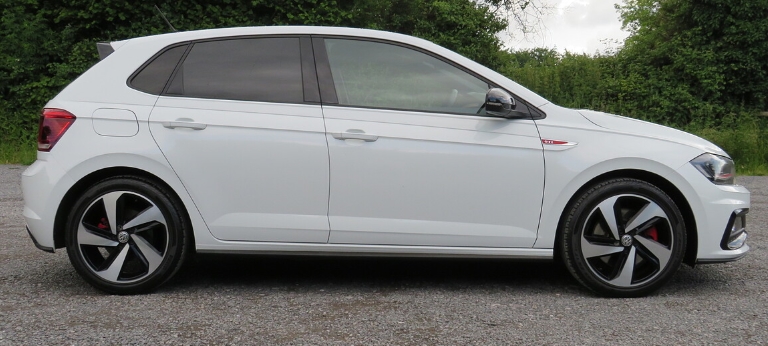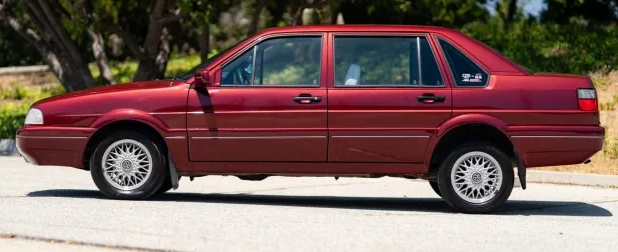The Unassuming Voyager: Tracing the Evolution of the Toyota Picnic
The Toyota Picnic – a name that might evoke images of outdoor excursions, family gatherings, or perhaps a slightly quaint, yet undeniably practical, mode of transport. While not a global blockbuster like the Corolla or a rugged workhorse like the Land Cruiser, the Picnic carved out a unique niche for itself, evolving through generations and across markets to become a testament to Toyota’s commitment to versatile, family-oriented transportation. This article delves into the fascinating, albeit perhaps less celebrated, evolutionary journey of the Toyota Picnic, charting its production years, its various models, and the trim levels that defined its appeal.
Birth of the MPV: The First Generation (XM10, 1996-2001)
The late 1990s marked a significant shift in the automotive landscape, with the burgeoning popularity of the Multi-Purpose Vehicle (MPV). Consumers were increasingly seeking vehicles that offered the passenger-carrying capacity and flexibility of a minivan, but in a more compact and maneuverable package. Toyota, ever attuned to market trends, responded by introducing the first-generation Picnic, codenamed the XM10, in 1996.
The XM10 Picnic was primarily designed for the Japanese domestic market (JDM), though it also found its way into select other regions, particularly in Europe. Its design was a clear departure from traditional sedans and wagons. It boasted a tall, boxy profile, optimized for interior space. The front-end featured a relatively simple, friendly face, with dual round or rectangular headlights (depending on the market and trim) and a prominent Toyota badge. The profile was characterized by sliding rear doors, a hallmark of MPVs that facilitated easy ingress and egress, especially in tight parking spaces. The rear of the vehicle was also designed for practicality, with a large, upward-opening tailgate providing ample access to the cargo area.
Underneath its utilitarian exterior, the XM10 Picnic offered a choice of efficient petrol engines. The most common was the 3S-FE, a 2.0-liter inline-four engine, known for its reliability and adequate performance. For markets demanding slightly more power, or for those prioritizing fuel economy, a 7A-FE 1.8-liter engine might have been offered in some configurations. Transmission options were typically a 5-speed manual or a 4-speed automatic.
The interior of the XM10 was where its MPV nature truly shone. It was designed to comfortably seat up to seven occupants across three rows of seating. The second and third rows were often foldable or removable, allowing for a highly adaptable cargo space. This versatility was a key selling point, enabling the Picnic to transform from a people carrier to a load-lugger with relative ease.
.

.
Trim Levels for the XM10:
While specific trim names could vary slightly by region, the general philosophy was to offer a balance of comfort, convenience, and cost-effectiveness.
Common trim levels included:
Base/Standard: This trim offered the essential features, focusing on functionality and affordability. It would typically include power steering, power windows, and basic audio systems.
G: Often a step up, the “G” trim might have added features like alloy wheels, a more premium interior fabric, and perhaps air conditioning as standard.
S: Sometimes denoting a sportier or more premium feel, the “S” trim could incorporate body-colored bumpers, fog lights, and upgraded interior trim.
L/Premium/Executive: These higher trims would typically include more creature comforts such as automatic climate control, a better sound system, possibly a sunroof, and more sophisticated upholstery.
The first generation XM10 Picnic successfully established the vehicle’s identity as a practical and versatile family mover. Its compact dimensions made it an attractive alternative to larger minivans, while its Toyota underpinnings promised the reliability and durability that the brand was renowned for.
Refinement and Expansion: The Second Generation (XM20, 2001-2009)
In 2001, Toyota unveiled the second generation of the Picnic, the XM20. This iteration represented a significant evolution, both in terms of styling and engineering, aimed at making the Picnic more competitive in a maturing MPV market.
The XM20 adopted a more modern and aerodynamic exterior design. The boxy, upright stance was softened with curvier lines, a more integrated front fascia, and sleeker headlights. The sliding rear doors remained a key feature, but their integration into the bodywork was more refined. The rear end also saw redesigns, with more prominent taillights and a less utilitarian, more car-like appearance.
Under the hood, the engine options for the XM20 were updated. The familiar 3S-FE 2.0-liter engine continued to be a mainstay, but it was often accompanied by a more fuel-efficient 1ZZ-FE 1.8-liter engine, particularly in European markets. For those seeking more power, a 1AZ-FSE 2.0-liter D-4 direct injection engine became available, offering improved performance and efficiency. Transmission choices remained a 5-speed manual or a 4-speed automatic, though the latter might have seen refinements for smoother shifting.
The interior of the XM20 also received a considerable upgrade. The dashboard design was more contemporary, with better ergonomics and improved material quality. The seating arrangement remained flexible, offering up to seven seats, with the second and third rows continuing to be foldable and reconfigurable. Toyota focused on enhancing comfort and convenience, with improved sound insulation and a wider array of available features.
Key Models and Trim Levels for the XM20:
The XM20 generation saw a more structured approach to model and trim designations, often reflecting regional variations.
Terra: Typically the entry-level model, offering essential amenities like power steering, power windows, and air conditioning.
Sol: A mid-range trim, often adding features like alloy wheels, body-colored door handles and mirrors, and a slightly upgraded interior.
Luna: Representing a higher trim level, the Luna often included features such as front fog lights, privacy glass, automatic climate control, and a more advanced audio system.
GXL: This was usually the top-tier trim, offering the most comprehensive package of features. This could include leather upholstery, a sunroof, satellite navigation (in later models), and chrome accents.
Avensis Verso (European Market): It is crucial to note that in many European markets, the XM20 generation was not sold as the “Picnic.” Instead, it was rebranded as the Toyota Avensis Verso. This rebranding aligned it with the Avensis passenger car range, hoping to leverage the established Avensis nameplate’s reputation for quality and reliability. The trim levels for the Avensis Verso mirrored those of the Picnic in other markets, with variations like “Luna,” “Sol,” and “Executive.”
The XM20 generation also saw the introduction of advanced safety features becoming more prevalent, such as anti-lock braking systems (ABS), electronic brakeforce distribution (EBD), and multiple airbags. These enhancements further solidified the Picnic/Avensis Verso’s appeal as a safe and practical family vehicle.
The Picnic’s Global Footprint and Variations:
While the XM10 and XM20 were the primary generations globally, the Toyota Picnic’s presence and name varied considerably across different markets.
Japan: The Picnic was a consistent presence in Japan, known for its practicality in navigating congested urban environments and its versatility for weekend getaways. Models like the “Picnic” and “G” were common.
Europe: As mentioned, the XM20 generation was widely known as the Toyota Avensis Verso. The XM10 was also sold as the Picnic in some European countries. The focus in Europe was on its fuel efficiency, practicality, and comfortable ride for longer journeys.
Australia: Australia saw the XM20 generation sold as the Toyota Ipsum. The Ipsum name had been used for the first-generation MPV in Japan, and Toyota carried it over for the Australian market. It was often positioned as a more affordable alternative to the larger Tarago (JDM Previa/Estima).
Southeast Asia: In countries like Malaysia and Singapore, the Picnic, particularly the XM20 generation, was a popular choice. Trim levels and engine options were often tailored to local preferences and taxation structures. This global variation in names and specifications highlights Toyota’s strategy of adapting its vehicles to suit the diverse needs and preferences of different automotive markets. Despite the different badges, the fundamental concept of a versatile, reliable, and practical MPV remained at the core of every Picnic, Ipsum, and Avensis Verso.
The Twilight of an Era: The End of the Picnic (c. 2009)
The MPV market began to shift in the late 2000s, with the rise of the compact SUV and crossover. These vehicles offered a similar sense of space and practicality but with a more rugged aesthetic and often perceived higher safety. As a result, the demand for traditional MPVs like the Picnic began to wane.
While exact discontinuation dates can be fluid and country-specific, production of the Toyota Picnic, in its various global forms, largely ceased around 2009. The XM20 generation marked the end of the line for the Picnic nameplate in many regions. In some markets, Toyota’s MPV offerings were phased out, with their space being filled by newer SUV and crossover models in their portfolios.
Legacy of the Toyota Picnic:
The Toyota Picnic might not have the same iconic status as some of Toyota’s other legendary models, but its legacy is undeniable. It represented a significant step for Toyota in the MPV segment, offering a well-built, reliable, and adaptable vehicle that catered to the evolving needs of families. Its success, particularly in markets where it was known as the Avensis Verso or Ipsum, demonstrated Toyota’s ability to create vehicles that blended practicality with a touch of refinement.
The Picnic’s story is one of quiet competence. It was a vehicle designed for everyday life, for school runs, for grocery shopping, for weekend adventures, and for family road trips. It wasn’t designed to turn heads with flamboyant styling or to dominate racetracks with blistering performance. Instead, it offered a dependable, comfortable, and incredibly practical solution for those who valued versatility and reliability above all else.
The evolution from the boxy XM10 to the more streamlined XM20, and its adaptation with different names across continents, showcases Toyota’s iterative approach to product development and its commitment to serving diverse global markets. While the name “Picnic” may have faded from the automotive landscape, the spirit of practical, family-oriented transportation that it embodied continues to live on in Toyota’s modern lineup of SUVs, crossovers, and minivans, proving that sometimes, the most enduring journeys are the ones taken in the most unassuming of vehicles. The Toyota Picnic, in its own quiet way, was a true voyager, carrying families and memories through the evolving automotive world.







